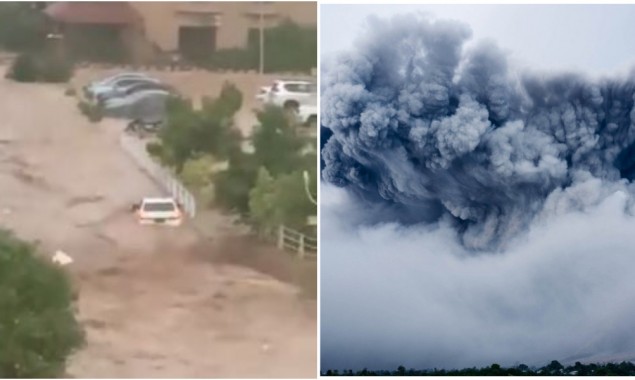
Cloudburst happens when an excessive volume of rainfall happens in a short period of time within a smaller geographical area.
Why is Cloudburst in news?
Rains are the blessings to all the living beings on the Earth because it is responsible for accumulating most of the fresh water on the Earth and offers suitable circumstances to many types of ecosystems, as well as water for hydroelectric power plants and crop irrigation.
Other forms are snow, drizzle, glaze, sleet, hail, and cloudburst.
But because Global warming has caused global changes in the rainfall model that’s why we get to know about clouds bursting every now and then.
Cloudburst is an intense quantity of rainfall in a brief time in a small geographical area. Meteorologists have explained that the cloudburst is a typical type of rainfall with a fall speed equal to or greater than 100 mm (4.94 inches) per hour.
How does a cloudburst occur?
Cloudburst is basically a rainstorm and occurs primarily in the desert-like and mountainous provinces, and in interior regions of continental islands due to the warm-up air current from the ground or below the clouds rushing up and conveying the tumbling raindrops up with it.
The rain falls down in a constant shower, which triggers unnecessary compression in the clouds as new drops form and old drops are shoved back into it by the updraft.
How is cloudburst different from rainfall?
Rain is compressed water falling from a cloud while cloudburst is a precipitous heavy rainstorm. A cloudburst is distinct from rain only in the quantity of rainfall logged. Rain over 100mm per hour is categorized as a cloudburst.
Hence, we can say the cloudburst is a real occurrence, but it usually appears quite unpredictably and very unexpectedly, and rather soaking.
In the Asian Subcontinent, it usually happens when a monsoon cloud drifts northwards, from the Bay of Bengal or the Arabian Sea across the lowlands than on to the Himalaya that sometimes brings 75 millimeters of rain per hour.
Read More News On
Catch all the Trending News, Weather News, Breaking News Event and Latest News Updates on The BOL News
Download The BOL News App to get the Daily News Update & Follow us on Google News.




